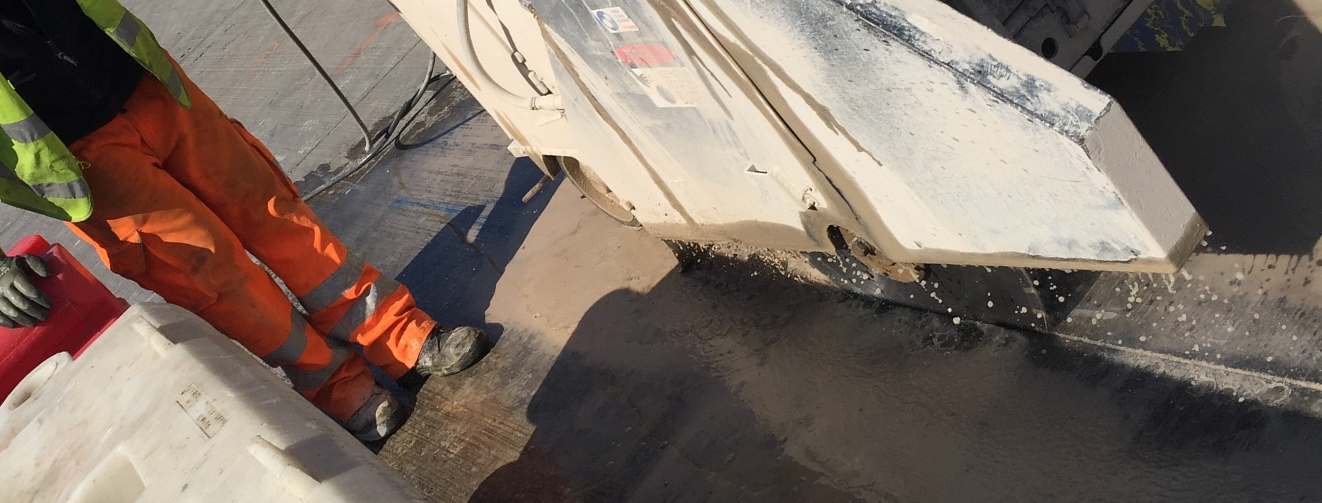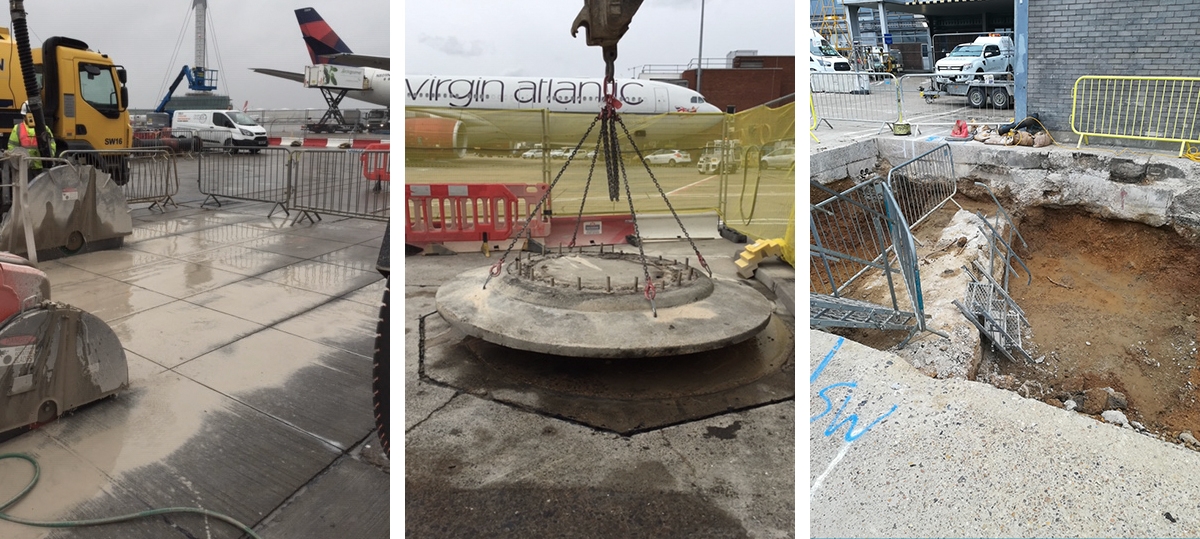
New Stands for Terminal 3 at London Heathrow
What needed to be done?
With more than 94,000 flights departing from Terminal 3 in 2018 alone, the concrete stands where aircraft park during boarding must be able to withstand this heavy use. This year, it was Stand 323 and 325’s turn for a revamp. We were called in to carry out rehabilitation work on the stands and on the concrete within them.
What was the challenge?
Old areas of concrete are always an unknown quantity. Even though most of the surfaces are documented (we know what’s within them) when concrete’s been there for this length of time, there are always anomalies! And these areas must be investigated before renovation work can be carried out safely.
What were we up against?
Working in any live airport environment comes with strict restraints on time, space and safety procedure. But as regulars at Heathrow and approved airport contractors, we came prepared.
- Working in a tight space. With space at a premium, there’s no margin for error! We predrilled the corners before each cut to prevent any overcutting.
- 24/7 service. To minimise disruption to the airport and its staff, we worked on a set schedule with a team of up to seven onsite during the day and one person on night shift.
- Health and safety. The job also involved working in and around potentially live services (including fuel pods) so there was a strict permit system in place. True to form, our team excelled in this area and Marius and Allan won an award for innovations in Health and Safety.
Why C&P were called in?
- Specific airport expertise (we’re a member of the British Aviation Group and approved airport contractors)
- Previous experience working at London Heathrow
- Competitive price
What equipment did we use?
- Diesel-powered floor saws
- Diesel-powered trailer mounted rigs
- Wire saw

How did we do it?
When an anomaly is found within an existing concrete base, it needs to be assessed before work can continue. We created individual a trial pits, allowing the concrete to be lifted out to reveal the anomaly within - usually an old service or fuel pod. The area can then be surveyed by an engineer to check if the service is live or dead and decide what action to take next. In some cases, extra concrete needs to be removed.
Prepping the fuel pods
Heathrow’s aircraft rely on an underground network of fuel pressure pipes. Fuel transfer vehicles plumb into these to refuel parked aircraft, but some are now redundant. As a part of the stands’ renovation, we stitch drilled a series of holes to isolate the old pods so they could be worked on safely.
Removing the rotundas
You’ve checked in, knocked-back your pre-flight pint and have your boarding pass at the ready. Time to fly! If your aircraft stand is by the terminal, you’ll normally board via an airbridge which connects the terminal to the plane. These airbridges manoeuvre in and out with each aircraft and are supported by large pillars which sit on a 3.5m diameter concrete bases, called rotundas. During the stand renovations, we used a wire saw to make a clean cut through the concrete rotundas to remove them. Next, we re-drilled holes for new starter bars in the top ready for the new base to be installed.
But like everything on a live airfield, it wasn’t all that simple! One rotunda was too close to the terminal for us to wire saw. To get around this problem, we drilled a series of 4-inch holes around 2-3m deep and used the hydraulic burster to mechanically burst the concrete out. This non-percussive, low-vibration technique allowed us to remove the concrete without any disruption to the adjacent terminal.
What’s next?
Once our removal works are complete and the new concrete has been poured, we’ll be back at Heathrow to for Stage 2:
- Joint sealing with fuel resistant material
- Carrying out thin bond concrete repairs with Maxi-Crete
- Repairing small cracks with fuel resistant material
What will the end result be?
Once Stage 2 is complete and we’ve carried out the necessary joint sealing and MaxiCrete repairs, Stands 323 and 325 at Terminal 3 will have undergone a full upgrade. Complete with new services and fuel pods, they’ll be ready to support thousands of aircraft (and passengers) for many years to come! Looking for an approved contractor to upgrade your airfield? We offer everything from AGL installation to joint sealing and patch repair. Get in touch with us today for a free quote.